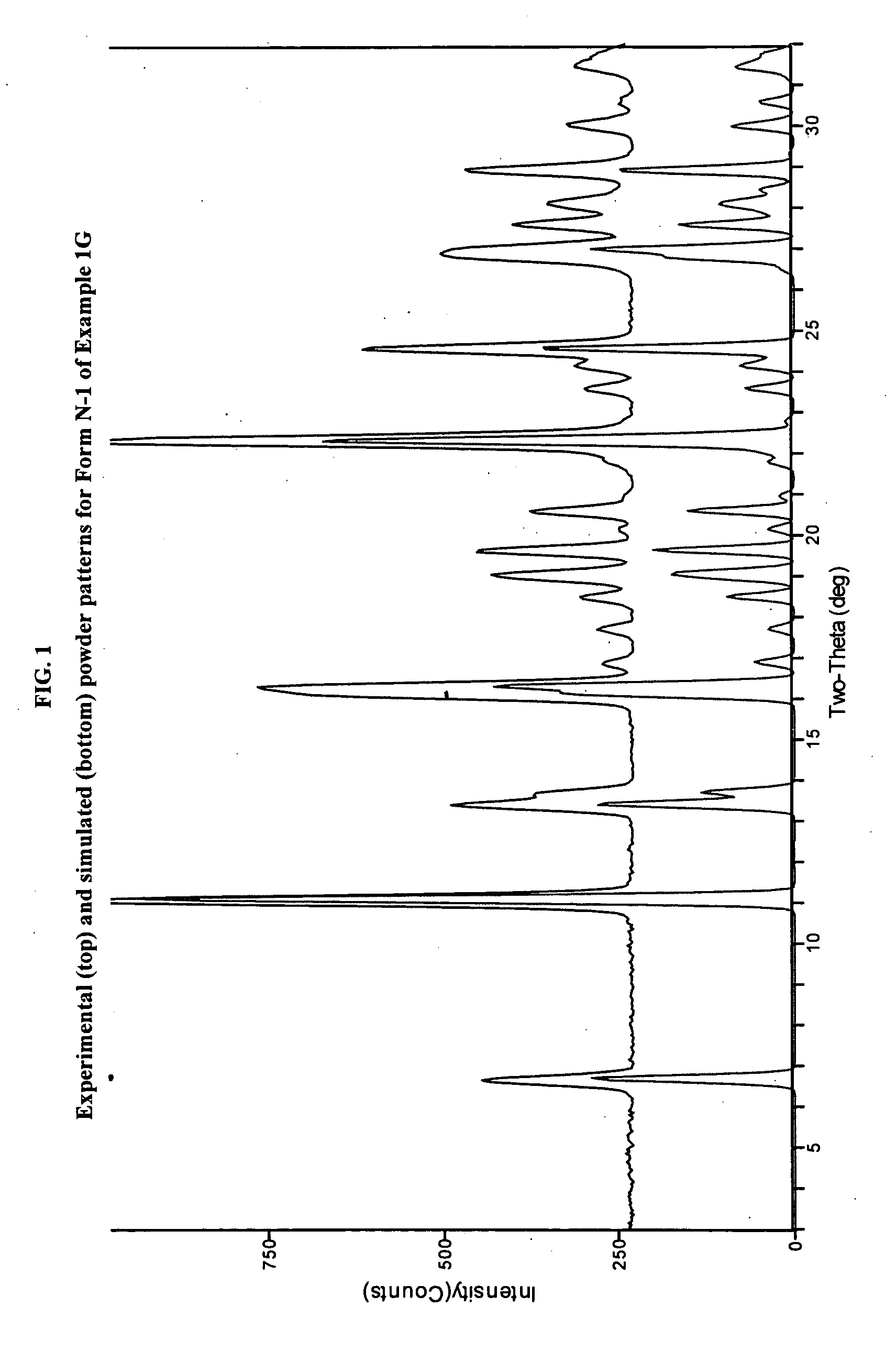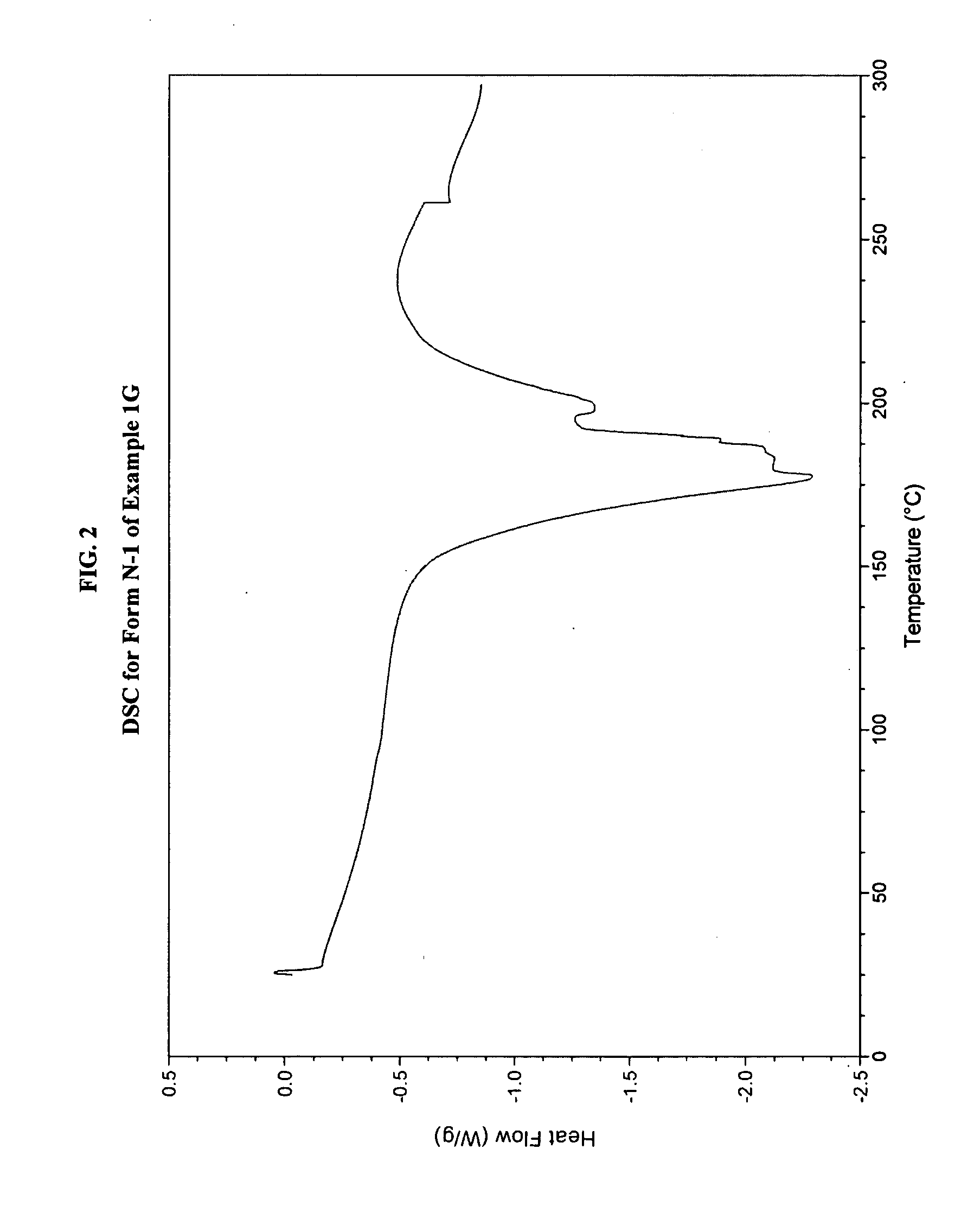Triazolopyridine 11-beta hydroxysteroid dehydrogenase type i inhibitors
a technology of hydroxysteroid dehydrogenase and triazolopyridine, which is applied in the direction of biocide, drug composition, metabolic disorder, etc., can solve the problems of severe metabolic abnormalities, but not show significant increases in plasma cortisol levels, and achieves fewer process steps and improves purity.
- Summary
- Abstract
- Description
- Claims
- Application Information
AI Technical Summary
Benefits of technology
Problems solved by technology
Method used
Image
Examples
example 1
2-(3-(1-(4-Chlorophenyl)cyclopropyl)-[1,2,4]triazolo[4,3-a]pyridin-8-yl) propan-2-ol
[0474]
[0475]To a solution of 2-chloro-3-bromopyridine (14.5 g, 75.1 mmol) in 100 mL of dioxane was added anhydrous hydrazine (35.4 mL, 1130 mmol) at RT. The reaction mixture was heated at reflux for 15 h, and then cooled to RT. After most of the solvent was removed under reduced pressure, the resulting residue was diluted with ethyl acetate, washed with water, dried over Na2SO4, and concentrated to provide a residue. Recrystallization of the residue in ethyl acetate and hexanes gave compound 1A (12.9 g, 91%) as a solid. LC / MS (m / z)=188 (M+H)+.
[0476]A stirred solution of 1-(4-chlorophenyl)cyclopropanecarboxylic acid (8.71 g, 44.3 mmol) and NMM in THF (200 mL) was cooled 0° C. Once at the prescribed temperature, isobutyl chloroformate was added dropwise over 10 min, and the resulting white suspension was stirred for 1h. After this time, a solution of compound 1A (8.33g, 44.3 mmol) in THF (250 mL) was a...
example 1g
[0485]In a three-necked 50-mL round-bottomed flask, a mixture of compound 1F (1.5 g, 4.34 mmol, 1.0 equiv.), toluene (15 mL) and acetic acid (3 mL, 3.2 g, 52.4 mmol, 12.1 equiv.) was heated to ˜100-105° C. where it was stirred for no less than 35.0 hr. After this time, the mixture was analyzed by HPLC, which indicated that the reaction was >97% complete. The reaction mixture was distilled at atmospheric pressure to provide a residue (˜10.0 mL). Toluene (15 mL) was added to the residue and the resulting mixture was again concentrated with atmospheric distillation to a volume of ˜16.5 mL. The resulting mixture was cooled to 20° C. where it stirred for about 16 hours. At the conclusion of this period, the mixture was diluted with water (12 mL) and then conc. HCl (560 μL, 6.5 mmol, 1.5 equiv.) was added. The resulting mixture was stirred for ˜10 min and then the organic layer was separated and discarded. The aqueous layer was extracted with a mixture of toluene / heptane (2:1, v / v, 6 mL)....
example 1g (
Example 1G(b)
Single Crystal X-Ray Measurements
[0510]Following the above Single Crystal Data procedure, the approximate unit cell dimensions in Angstroms (Å), as measured at a sample temperature of room temperature, as well as the crystalline cell volume (V), space group (sg), molecules per asymmetric unit, and crystal density for the N-2 form of Example 1G are shown below.
Cell dimensions:[0511]a=12.908(4)[0512]b=12.813(4)[0513]c=10.959(2)[0514]α=90[0515]β=90[0516]γ=90[0517]Space group: Pca21 [0518]Molecules / asymmetric unit (Z′): 1[0519]Density, calc g-cm−3: 1.335
[0520]The unit cell parameters were obtained from single crystal X-ray crystallographic analysis according to the procedure described in Stout et al., X-Ray Structure Determination: A Practical Guide (MacMillian, 1968), previously herein incorporated by reference.
[0521]X-ray powder diffraction (PXRD) data were obtained using the PXRD procedure described hereinabove. Table 2b and FIG. 5 show the PXRD d...
PUM
| Property | Measurement | Unit |
|---|---|---|
| Temperature | aaaaa | aaaaa |
| Composition | aaaaa | aaaaa |
Abstract
Description
Claims
Application Information
 Login to View More
Login to View More - R&D
- Intellectual Property
- Life Sciences
- Materials
- Tech Scout
- Unparalleled Data Quality
- Higher Quality Content
- 60% Fewer Hallucinations
Browse by: Latest US Patents, China's latest patents, Technical Efficacy Thesaurus, Application Domain, Technology Topic, Popular Technical Reports.
© 2025 PatSnap. All rights reserved.Legal|Privacy policy|Modern Slavery Act Transparency Statement|Sitemap|About US| Contact US: help@patsnap.com



